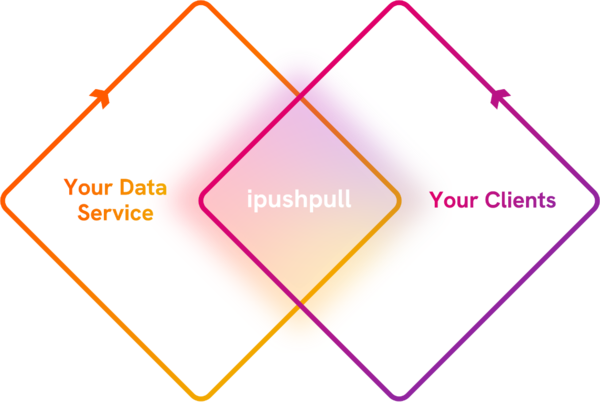
Our recent blog Accelerate user onboarding for your data services with ipushpull explored how an omnichannel delivery and zero client install approach can drive rapid end-user adoption of a data-driven service. In this follow-up blog, we look at some of the specifics of how omnichannel delivery can transform the client experience and engagement with a data service, driving efficiency and growth.
Standing out from the crowd
Data-driven services are becoming increasingly essential in today's competitive and fast-paced financial markets. However, delivering data to clients in a way that meets their needs and expectations is not an easy task especially with so many screens competing for client attention. Clients want access to relevant, timely and actionable information that can help them make better decisions and achieve their goals. Achieve that, and you can stand out from the crowd.
They also want to avoid the hassle of switching between multiple screens, applications and platforms to get the data they need. That's why omnichannel delivery is the key to data-driven growth. Omnichannel delivery means providing data to clients in the format and channel they prefer across a variety of applications.
Delivering your service to where the client needs it
Your clients are already inundated with multiple logins to many vendor screens. Even if login is automated, how many screens can they really keep an eye on? Most of the time they're not even looking at their vendor screens, but dealing with emails, chat messages, or working in spreadsheets.
Busy clients need information delivered into their generic workflow tools in which they immerse themselves throughout the working day such as chat platforms like Microsoft Teams, Slack and Symphony, spreadsheets, or email. No more context switching between screens or copying and pasting data. Transforming the client's experience and the value of the service.
Putting your client in control with watchlists and trigger events
So your data, in your service, delivered into your clients' workflow tools sounds great in principle, but how do you decide what to deliver and when? The answer is simple. You don't decide, your client does. You give them the means to self-serve and pre-configure alert watchlists and trigger events, meaning they automatically get the data they asked for in the format and in the place they need it.

The video shows an example of a client user creating watchlists from within Symphony chat.
Clients love it because they don't have to be proactively checking lots of screens constantly with the comfort, that when a key event occurs, they'll be alerted in the applications they're using, so they're not going to miss it.
Increase the speed to execute tasks, and reduce manual intervention and errors with workflow automation
Any interaction must be simple for the client or the focus will be lost and they won't engage with the service. An alert needs to prompt the client and allow them to take further action, for example, a dropdown with set follow-up options such as 'send order' to an execution service.
Workflows can be layered over the basic data-sharing constructs. An omnichannel platform can marshal workflow messages back and forth between a client and a service back-end, while desktop protocols like FDC3 can also be used to automatically pull up other applications on the desktop with a single click, pre-populated with the information of interest.
Specifically for chat workflows, layering on simple automation features adds huge value. Rather than freeform text, messages generated by forms can be standardised and therefore accurately interpreted by a service without manual intervention. That means easier automation, increasing speed, and efficiency and reducing errors and risk. While the rapid rise of LLMs enables even simpler UI/UX.
First mover advantage
As clients increasingly demand new ways of engaging with data-driven services, those who adopt an omnichannel model and have a solid future-proof strategy in place will doubtless be the ones to reap the benefits of the huge growth opportunities. Omnichannel delivery can transform client experience and engagement with a data service by delivering data to where the client wants it, putting them in control of their data consumption, and automating their workflows with simple tools. By doing so, data-driven services can increase their value proposition, differentiate themselves from the competition, and build loyal and satisfied client relationships.
If you'd like to find out more about how ipushpull could help you implement an omnichannel delivery model for your data service, contact us today or visit our omnichannel solutions page.

-1.png?width=2000&name=Untitled%20(45)-1.png)
.png?width=1200&height=628&name=Blog%20header-1%20(27).png)


.png)
.png)
